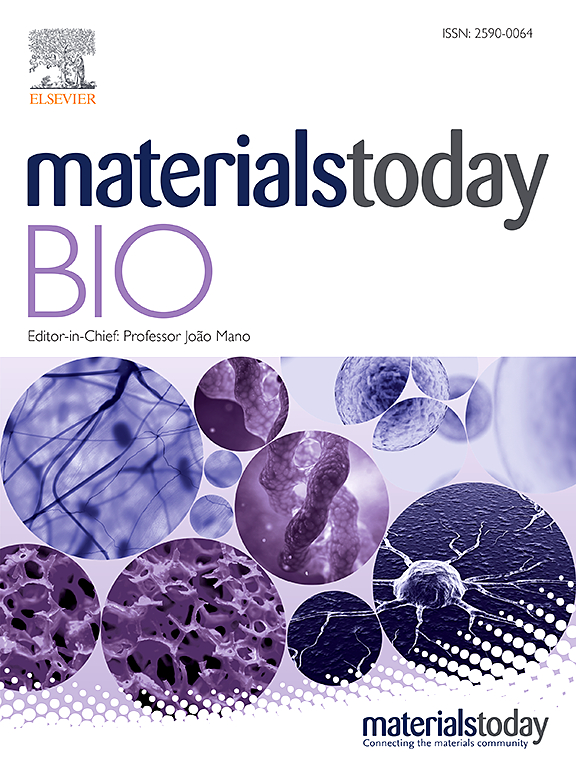Application of a novel thermal/pH-responsive antibacterial paeoniflorin hydrogel crosslinked with amino acids for accelerated diabetic foot ulcers healing
IF 8.7
1区 医学
Q1 ENGINEERING, BIOMEDICAL
引用次数: 0
Abstract
Diabetic foot ulcers (DFUs), a severe and common complication of diabetes, present significant treatment challenges due to the limitations of conventional dressings, such as poor mechanical properties, bioactivity, and limited functionality, which hinder fast and effective wound healing. To address these issues, we developed a novel natural amino acid-based hydrogel loaded with paeoniflorin (PF@PNMA1) and comprehensively evaluated its properties and functions. The nanogel particles (NGs) were synthesized via emulsion polymerization using N-isopropylacrylamide (NIPAM), methacrylic acid (MAA), and chemically modified arginine (MArg). The poly(NIPAM-co-MAA) (PNM) and poly(NIPAM-co-MAA-co-MArg) (PNMA) gels were prepared by functionalizing the NGs with glycidyl methacrylate (GMA). The different concentrations of amino acids were added to explore the optimal mechanical properties of the gel. Through the rheological measurement, we found that PNMA1 gel has good ductile properties with a critical strain up to about 63 %. At the same time, we also verified its antibacterial activity and found that the viability of bacteria decreased to 47.46 % after 3 h. Preliminary tests using network pharmacology and molecular docking confirmed the therapeutic potential of PF for DFUs. The PF@PNMA1 gel demonstrated excellent biocompatibility, and in vivo experiments revealed its effectiveness in promoting angiogenesis and wound healing. After 10 days, the wound healing rate was 25.6 % higher than that of the control group. The PF@PNMA1 shows great potential as an effective therapy for DFUs treatment.

求助全文
约1分钟内获得全文
求助全文
来源期刊

Materials Today Bio
Multiple-
CiteScore
8.30
自引率
4.90%
发文量
303
审稿时长
30 days
期刊介绍:
Materials Today Bio is a multidisciplinary journal that specializes in the intersection between biology and materials science, chemistry, physics, engineering, and medicine. It covers various aspects such as the design and assembly of new structures, their interaction with biological systems, functionalization, bioimaging, therapies, and diagnostics in healthcare. The journal aims to showcase the most significant advancements and discoveries in this field. As part of the Materials Today family, Materials Today Bio provides rigorous peer review, quick decision-making, and high visibility for authors. It is indexed in Scopus, PubMed Central, Emerging Sources, Citation Index (ESCI), and Directory of Open Access Journals (DOAJ).
 求助内容:
求助内容: 应助结果提醒方式:
应助结果提醒方式:


